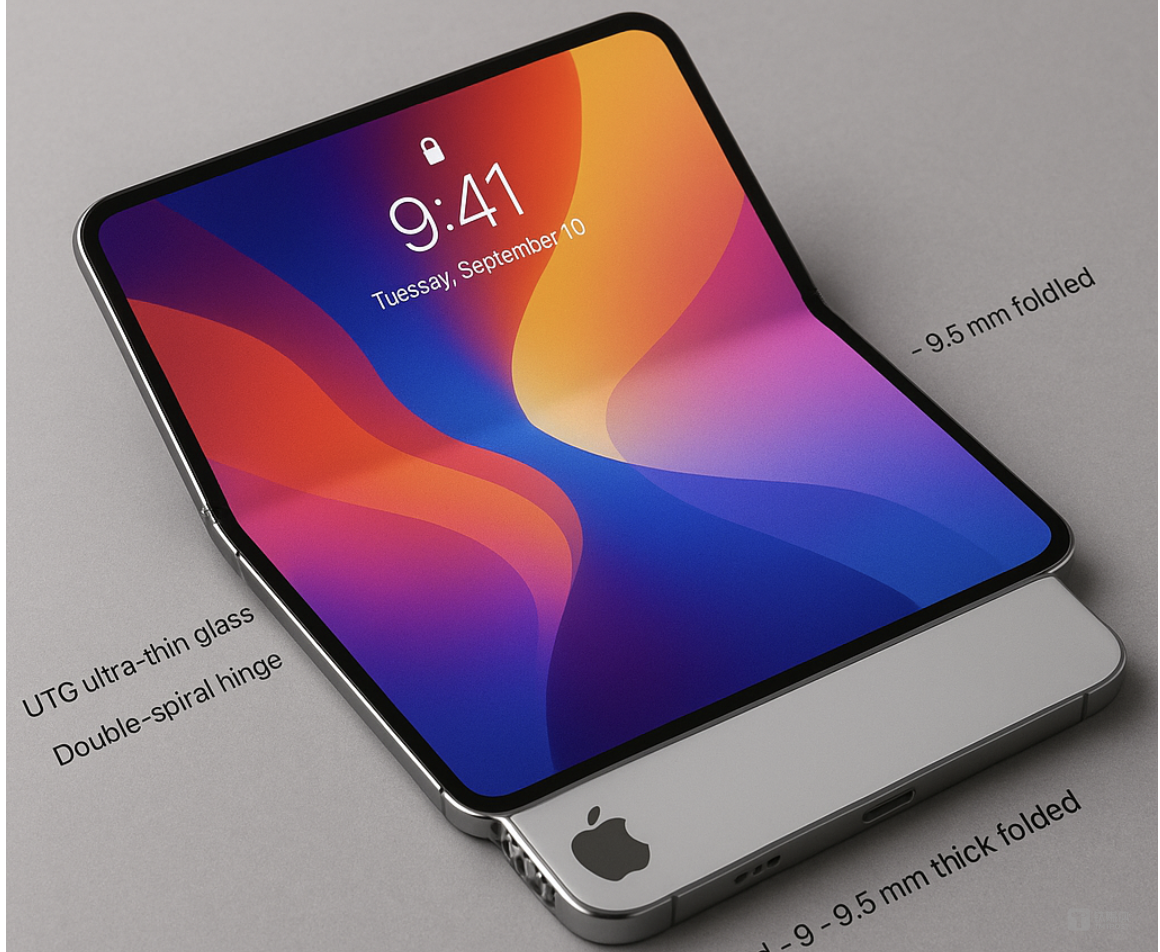
AsianFin -- Apple Inc. is finally moving closer to mass-producing its first foldable iPhone after years of speculation, patents, and stalled development—but it may be arriving too late to shake up a market already dominated by Chinese brands.
According to analyst Ming-Chi Kuo, Foxconn is expected to begin production of Apple’s foldable iPhone in late Q3 or early Q4 of 2025. The device, featuring a book-style fold with a 5.5-inch external and 7.8-inch internal display, is set to use ultra-thin glass (UTG) panels exclusively supplied by Samsung Display. However, key specifications—including the critical hinge system—have yet to be finalized, suggesting the product won’t ship until the second half of 2026.
Kuo cautions that recent speculation about Apple ordering 15 to 20 million units likely reflects cumulative demand over a 2–3 year product cycle rather than a single year. Initial annual shipments are expected to fall in the low millions by 2027 and 2028.
The foldable iPhone will feature a dual-spiral titanium and carbon fiber hinge rated for 200,000 folds and is expected to retail for $2,000–$2,500—positioning it among Apple’s most expensive devices ever. Apple is also likely to drop Face ID in favor of a side-mounted Touch ID sensor due to structural constraints.

Despite the high-end engineering, Apple’s foldable is entering a market where rivals have a commanding lead. Nearly every major Android OEM—including Huawei, Samsung, Xiaomi, and Honor—has released multiple generations of foldable smartphones since Apple first secured a flexible display patent in 2019.
By contrast, Apple has spent years testing prototypes and filing patents for components like UTG glass and reverse-axis hinges, with little to show in terms of commercial readiness—until now.
Global foldable smartphone sales reached 16 million units in 2024, according to industry estimates, with China accounting for over half of total shipments. Huawei led China’s foldable segment with a 51.29% market share in 2024 and an average 50.3% share over the past five years. As of 2025, Huawei’s market share in the foldable category has climbed to an estimated 73%, underscoring its technological lead.
Huawei also overtook Samsung in global market share in Q4 2024, capturing 31.2% of the segment. Meanwhile, Apple has yet to sell a single unit.
Apple’s late entry into the foldable market echoes its recent struggles in generative AI. While competitors aggressively rolled out AI features following the 2022 launch of ChatGPT, Apple waited until 2024 to debut Apple Intelligence, its suite of AI tools for summarizing text and generating images.
The rollout has been rocky. Key features—including a promised overhaul of Siri—remain unfinished, and Apple leaned heavily on a partnership with OpenAI to fill capability gaps. At its June 2025 Worldwide Developers Conference, Apple made only passing reference to AI, instead emphasizing OS design tweaks.
With little hardware differentiation and a maturing supply chain, Apple’s success in foldables may hinge on whether it can deliver a superior software experience—and whether Apple Intelligence matures fast enough to make a meaningful impact.
If not, the foldable iPhone risks joining a growing list of Apple products that follow rather than lead, priced at a premium but struggling to justify it.
更多精彩内容,关注钛媒体微信号 (ID:taimeiti),或者下载钛媒体 App
